Legall de Kermeur - First French Champion
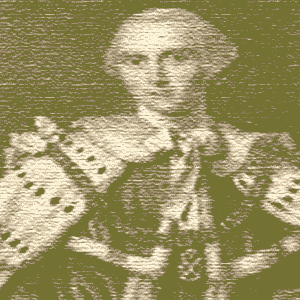
Legall De Kermeur
This is where the best players in France and indeed Europe gathered to play. Even players from the Middle East like Philipp Stamma arrived. De Kermeur came here to play and by 1730 he was easily the strongest player.
He would remain here, holding court in the Café until the end of his life. He was the best for many years until being surpassed by Philidor, but no one else.
Young Legall
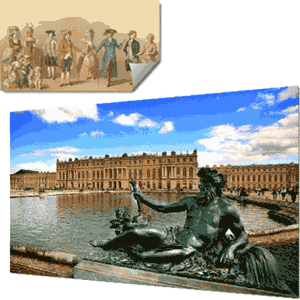
Legall De Kermeur was born in Versailles
François-René won the Battle of Münderkingen in 1703 and gained the title of Lieutenant General. He was awarded this by the King himself.
François-Antoine's battles would play out on a different theatre however. That of the 64 checkered squares. He took up chess and there he found his gift in life.
Supremacy at the Café
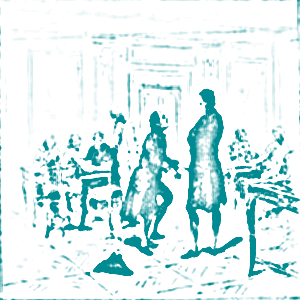
Legall De Kermeur and the philosopher Diderot at the Café de la Régence
The champion played his opponents, giving them odds of a Rook or a Knight or pawn and move, just to make these games a contest. You had to earn the right to play at the odds of a Knight by succeeding at Rook odds. Many players could not beat him even with the extra Rook.
Legall would gain an income by playing for stakes. He would also make money by giving lessons to students on the game of chess. He had many of these. One would stand out from all the others. His name was François-André Danican Philidor.
The Star Pupil
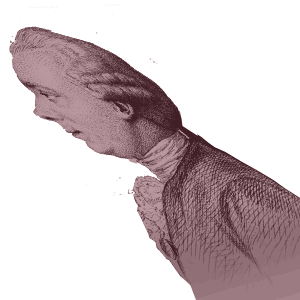
Legall De Kermeur trained the child protege, Philidor (shown here)
The boy, Philidor, was an eager pupil and gained in strength. At first Legall gave him Rook odds. After 3 years of toil, Philidor worked his way through Knight odds, pawn and move and so on, until finally he was worthy of facing Legall on even terms.
Philidor then left Paris to play the best players in the Netherlands and England. Legall continued to reign supreme in the Café de la Régence.
Return of Philidor
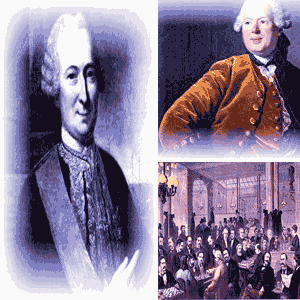
Legall De Kermeur (left) played Philidor in 1755 to determine who was best
It was 1755. Legall had been the #1 player in the world for 25 years. Philidor was now 29 years old. He had fully developed his game. He had come of age.
The two agreed terms for a match. No score survives of the match. We know however that Philidor was victorious. He was now regarded as the best player in the world.
Second in Command
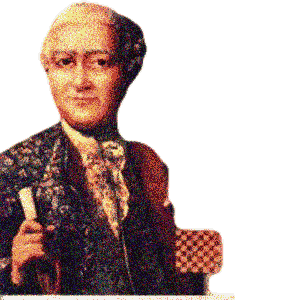
Legall De Kermeur was #2 player in France after 1755
I am probably, without any exception, the oldest chess-player in Europe. I have not only had the honour of contending "on the checquer'd field" with M. Philidor, but I have frequently played at the Café de la Régence with M. de Legalle, the master of that distinguished Professor, who, in my younger days, was a better player than his celebrated pupil.
There is no man of whose person and deportment I retain a more vivid recollection than M. de Legalle; he was a thin, pale old gentleman, who had sat in the same seat at the Cafe, and worn the same green coat for a great number of years when I first visited Paris. While he played at chess, he took snuffs in such profusion that his chitterling frill was literally saturated with stray particles of the powder, and he was, moreover, in the habit of enlivening the company during the progress of the game, by a variety of remarks, which every body admired for their brilliancy, and which struck me perhaps the more forcibly, as I was at that time but indifferently acquainted with the French tongue.
Legacy of Legall
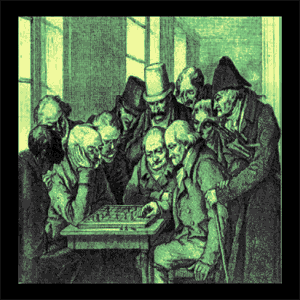
Legall De Kermeur plays Saint Brie in 1787
The pawns certainly played a much more pronounced role in the games of the French champions when compared to the earlier Italian champions.
The afore-mentioned miniature was of course the famous Legal's Mate. There is a discrepancy on the game score. Chessbase and Chessgames.com give slightly different moves for the game. The game is discussed on Chessgames.com. This miniature in just seven moves contains a couple of valuable lessons on opening strategy.
Moving On

François-Andre Danican Philidor
He trained the child prodigy Philidor, who would emerge as his successor. How much of Philidor's ideas came from Legall we cannot say. The suggestion from some of the poetry written about them is that Legall was the more cautious of the two.
Did Legall see the pawn chain as a means to annex space from his opponent? The means to drive back enemy pieces on to bad squares, making room for his pieces to establish themselves on good ones? This was certainly the view of Francois-Andre Philidor.






